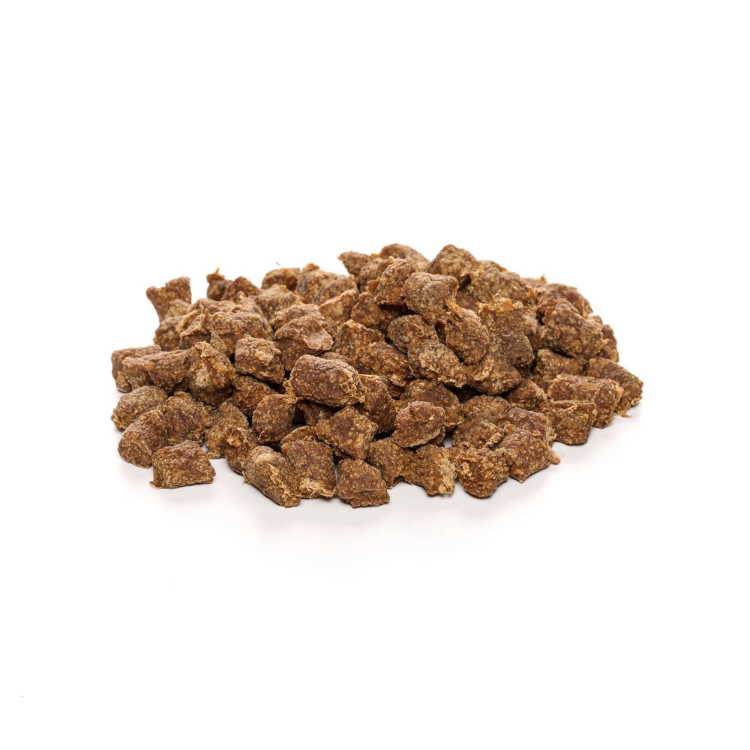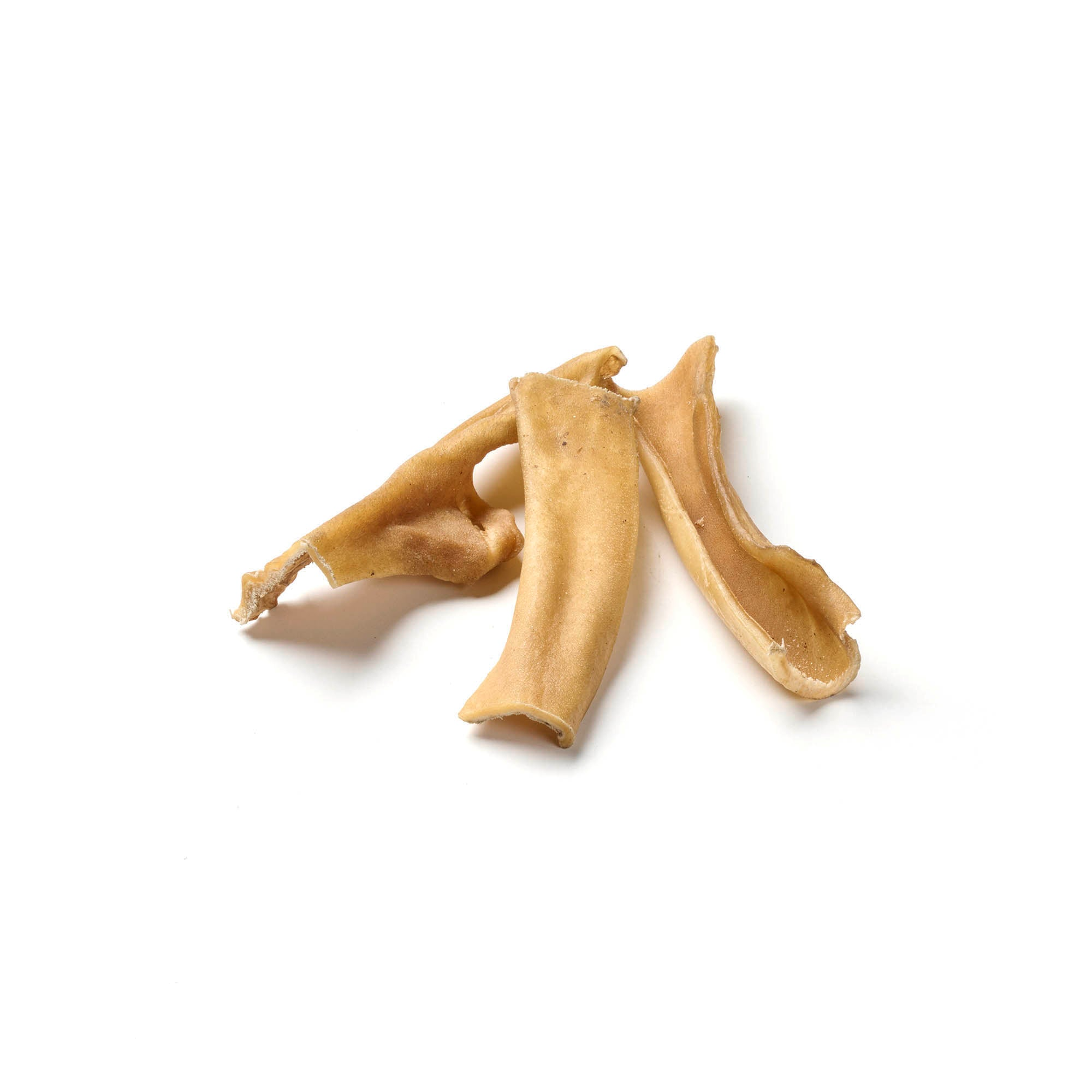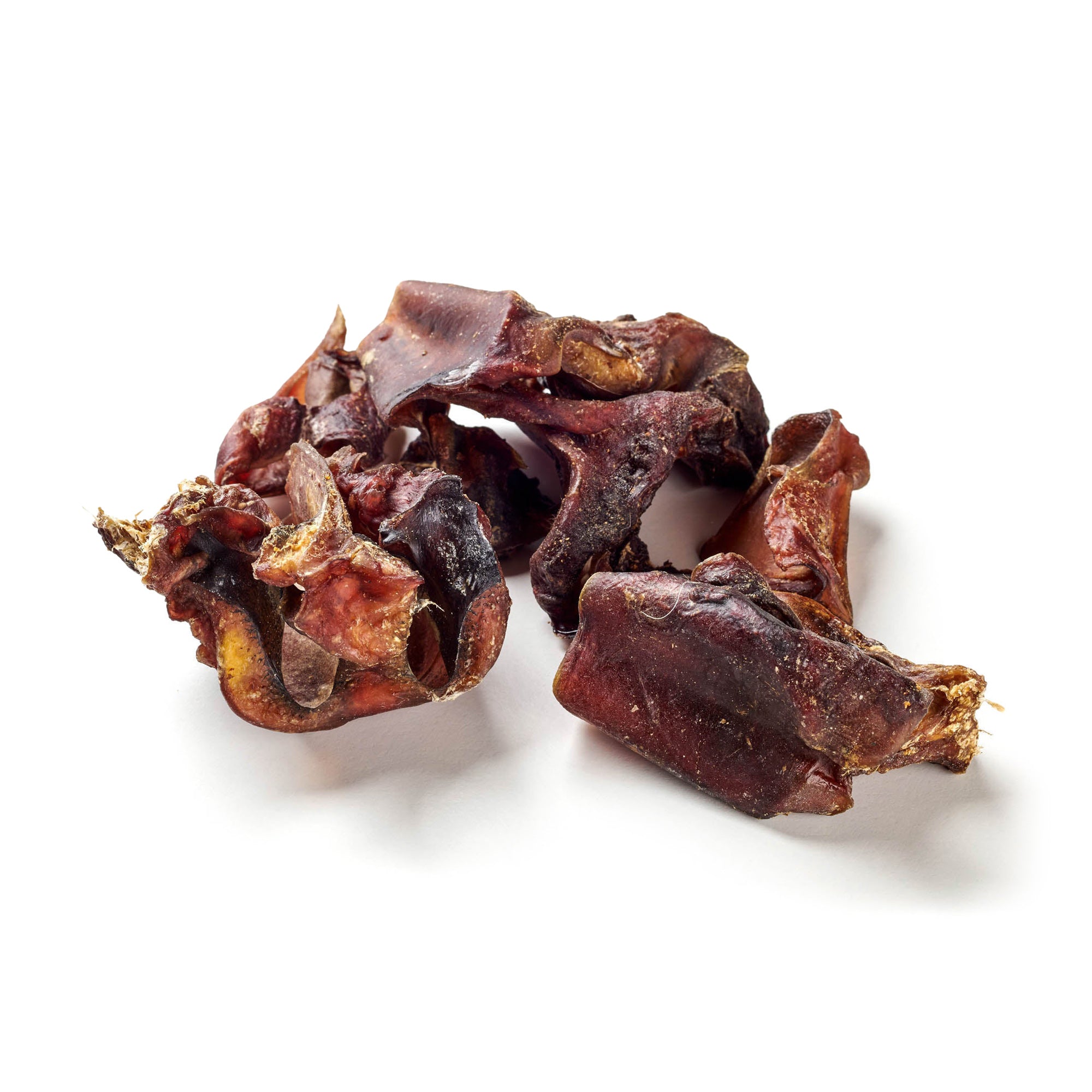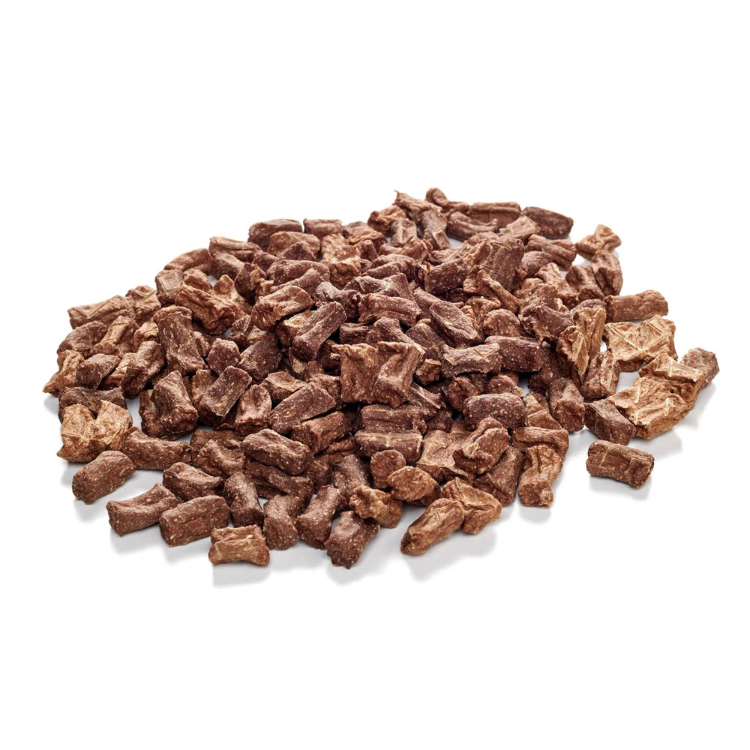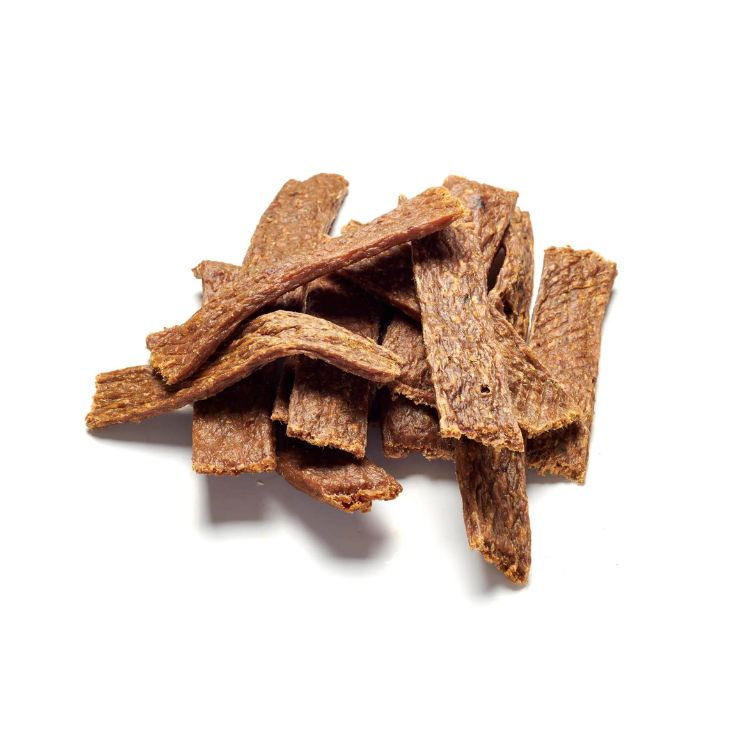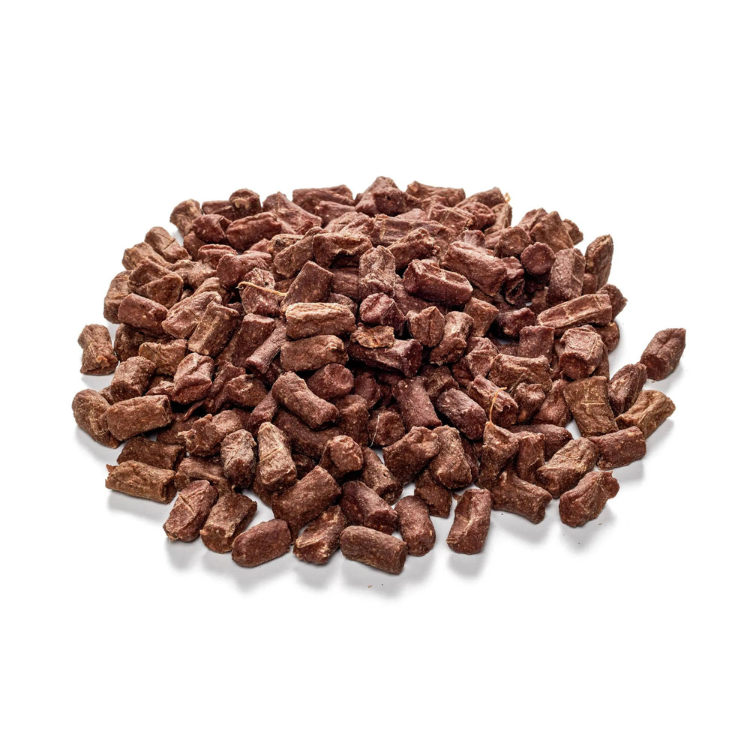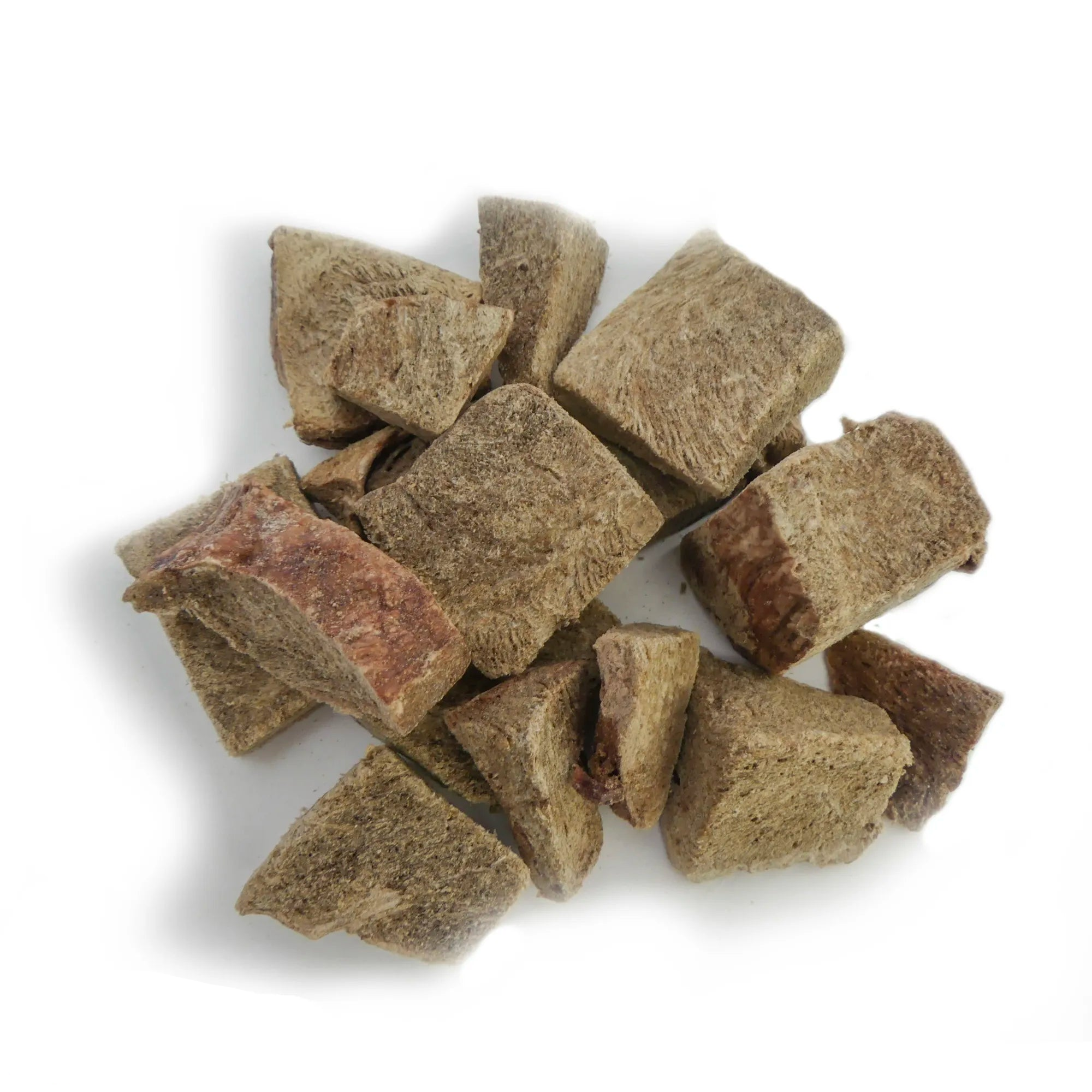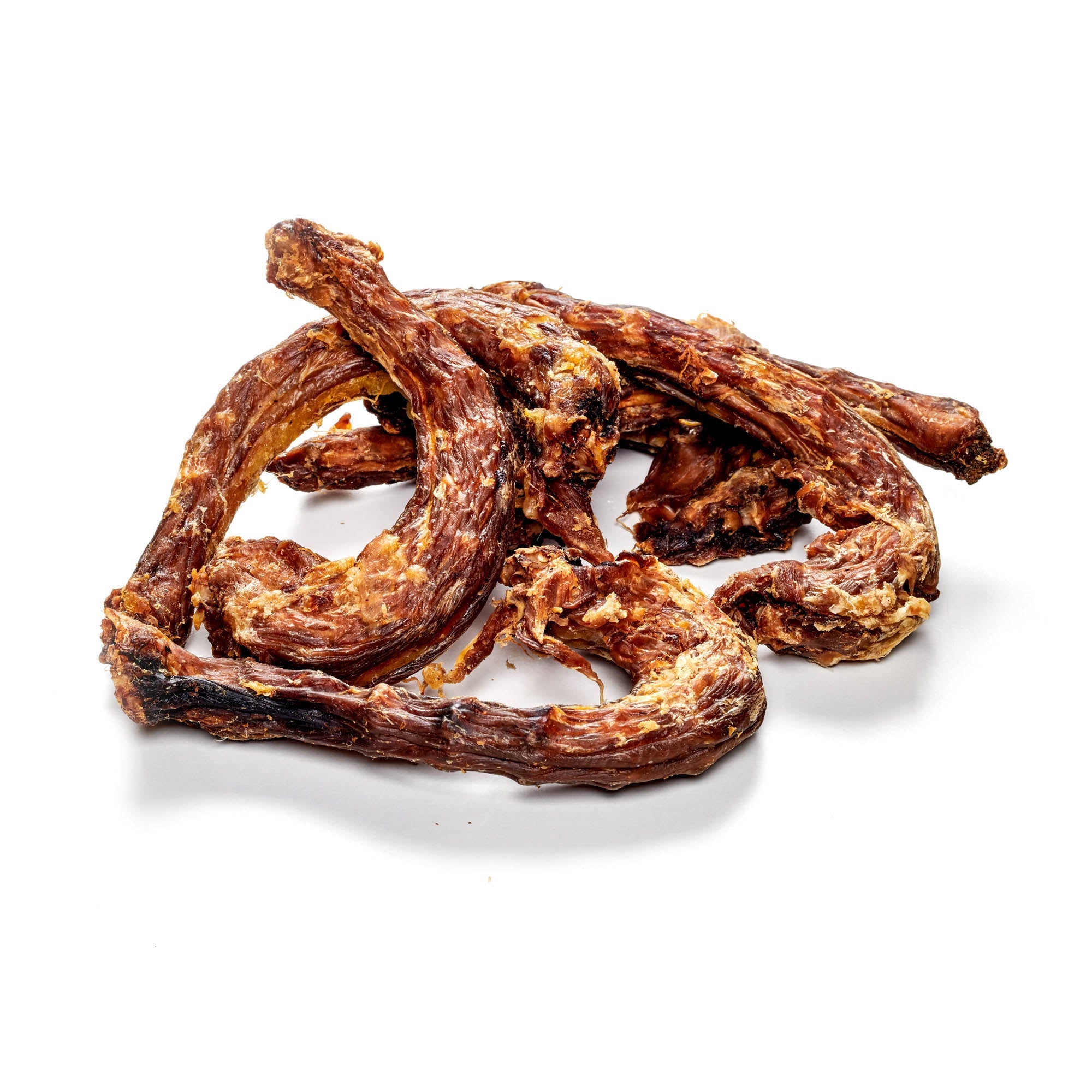
Frozen food and what you should know about it
Share
Everyone probably knows about dry or wet dog food . But there are always new and different feeding methods on the market, such as grain-free, hypoallergenic or even vegan dog food. BARF is also becoming increasingly popular and frozen dog food is heading in the same direction. Here you can find out what advantages frozen food has and whether it might also be an option for you and your four-legged friend.
The selection of dog food on the market is huge and can overwhelm even experienced dog professionals. However, new dog owners in particular have no idea at first which dog food is the best choice for their own dog. Opinions sometimes vary widely. Some even feed their dog vegan, while others want to give their four-legged friends the most traditional and species-appropriate diet possible. If you are really serious about it, you will eventually turn to BARF . This involves a lot of effort - but frozen food can make things easier.
Contents: Frozen food
High quality dog snacks to pamper your dog, now available!
What is frozen dog food?
Frozen food is raw or fresh meat that has been frozen for feeding. The term BARF (organic, species-appropriate raw food) or BARF feeding is often used in everyday animal nutrition.
The frozen food consists mainly of bones and raw meat, to which unheated and pureed vegetables and fruits are added, which ensure a sufficient supply of vitamins and fiber.
When feeding frozen food, experts also use the verb “barfen”, which ultimately comes down to the method of feeding fresh meat.
By the way, it is not only dogs who can be fed raw food; you can also buy suitable food for cats, which makes it possible to feed the four-legged friends in a species-appropriate manner.
What are the advantages of frozen food?
A key advantage of frozen food is that it provides the animal with a natural, species- appropriate diet. As we know, dogs are descended from wolves, so they have adopted their diet. In the wild, wolves also prefer raw meat from wild animals, which is precisely tailored to their organism.
It is also possible to store the food in the freezer or freezer compartment for a long time. This means you can create a small supply of frozen food for your pet, which you can feed over time.
This means you don't have to go to the supermarket or pet shop regularly and you always have something in stock, even if the shops are closed. In addition, the food has a long shelf life in cold temperatures and takes up less space than stacked cans or large packages of dry food.
In addition, you can portion the food perfectly and defrost it in small quantities. This is particularly advantageous compared to cans, as the contents do not have to be used up completely. Finally, the food provides the dogs with a varied diet, as it contains not only a lot of protein, but also vitamins and fats that the dog needs to grow and thrive.
What effect does frozen food have on the dog’s development?
Dogs that are fed frozen food have been shown to have shinier fur and are much more athletic and agile in everyday life than four-legged friends that are fed conventional industrial food. When frozen, unlike when heated during food production, most of the trace elements, vitamins, minerals, enzymes, fats and proteins are retained, so that the dog is provided with all the important ingredients.
In addition, the pet develops a pleasant body odor and better teeth because the food does not contain as much sugar. When fed frozen food, the dog is no longer exposed to as many plant proteins and is less likely to develop typical "common dog diseases" such as ADHD, arteriosclerosis, gastritis or problems with the thyroid gland.
When you go for a walk, smaller piles of droppings are produced, which are easier to remove with a bag. In addition, the smell of droppings after feeding frozen food is not as intense or bad-smelling as with the alternative of industrial food.
Reward your best friend with our dog treats!
What should you consider when buying frozen food for dogs?
When buying frozen food or BARF food for dogs, it is particularly important that the fresh meat is really fresh and has been frozen by the manufacturer in a hygienically perfect condition. Ideally, the product is from Germany and has short transport routes that do not unnecessarily interrupt the cooling of the meat. Unlike industrial feed, this should only contain high-quality animal components and no meat waste products that can be found in canned food. The selection is wide: in addition to common meat from cattle, poultry or game from the forest, exotic animals such as ostrich or kangaroo can also be used as frozen meat. One exception is pork, which is not suitable as BARF food for dogs. Frozen pork can cause Aujeszky's disease in animals, which can even lead to the death of the four-legged friend. Therefore, when buying, always make sure that the frozen food does not contain any animal components from pork. Furthermore, organic seals or seals of approval can be a good indication of a quality frozen food that offers the four-legged friends the necessary stamina and strength in everyday life. When buying, you should also pay attention to the correct production method. The food must be frozen for at least a week at a cold temperature of between -17 and -20 degrees so that all pathogens contained in it are safely killed. This is the only way to ensure that the frozen food you buy for dogs is not objectionable in terms of hygiene.
For which dog breeds is frozen food suitable?
Since all dog breeds ultimately descend from wolves and are bred from the former wild animal, frozen food is suitable for all dog breeds. You should be careful when feeding puppies frozen food. Since the organism of puppies is not yet fully developed, you should avoid feeding BARF food to young dogs. Frozen food contains a lot of protein, which can lead to faster growth in the development of puppies. Some body parts such as joints cannot grow as quickly, so the dog can suffer developmental disorders. When feeding puppies, you should use special puppy food. Only when the dog is an adult can you slowly switch the diet to frozen food and feed your dog using the BARF method. However, the food is ideal for dogs that show allergic reactions to industrial food. By feeding the dog in a species-appropriate manner, you can combat many allergies in dogs and the formation of cancer in dogs is also reduced by feeding raw meat.
How much frozen food does my dog need when feeding?
Over time, you will develop a feeling for the right amount to defrost. Unlike canned food, BARF food is available frozen in large portions, which requires some practice to defrost the right amount. In general, however, it can be said that an adult dog needs about two percent of its own weight in food. For example, if you have a dog that weighs 30 kg, you should allow for about 600 grams of food per day. This can of course vary and depends on the dog's breed, its daily activity and the animal's age. The largest portion of BARF food should of course consist of raw meat and offal. These should make up 70 to 90 percent of the food. There is also a portion of vegetables, which should contain a maximum of 30 percent. If the dog is overweight or underweight, the amount of frozen food should be adjusted.
How should frozen food be stored at home?
If you want to store the dog food for a longer period of time and stock up on BARF food for your pets, then storing it in a freezer is essential. The frozen meat should be kept separate from other foods so that the sensitive food cannot become contaminated.
It is also important that you only defrost as much frozen food for your dog as he really needs for one meal. Excess thawed meat must not be frozen again. The risk of pathogens forming after defrosting is too great, which can spoil the meat and cause illness in your dog. Regular cleaning of the food bowl is also necessary for hygienic feeding. Pathogens can spread particularly quickly here and contaminate freshly prepared meat. You should therefore wash and clean the bowl every day before filling it with new frozen food. Regularly washing your hands is also a standard when preparing meat, regardless of whether you are preparing the meat meal for yourself or your four-legged friend. You should always check the expiration date before preparing anything. Even if the frozen food can be kept in the freezer for longer, it should be disposed of if the maximum storage period has passed.
Therefore, only buy as much BARF food as you really need.
How do you properly prepare frozen food for your dog?
After defrosting in the refrigerator, the meat can be fed raw. Some dogs find this unusual at first. In this case, the meat can be easily pre-cooked. The cooking process not only makes the BARF food tastier and easier for the dog to digest, it also kills any possible germs. You should feed the cooked food directly to your four-legged friend and not leave it out for any longer afterwards so that no germs can form. We recommend this cooking method especially for families with children in the household, as it is the most hygienic.
Where can I buy frozen food?
Most pet supply stores now have a good selection of frozen food. But of course, frozen food can also be ordered online these days.
Conclusion
Frozen food can be a very suitable alternative to other types of food. As with any type of food, you should of course pay attention to the quality of the food. Observe how your furry friend reacts to the food and whether it leads to positive or negative behavior. For example, frozen food with fruit or vegetables can be a very good choice for dogs, provided the proportions are well balanced.
Dog chews available for happy and satisfied four-legged friends!

